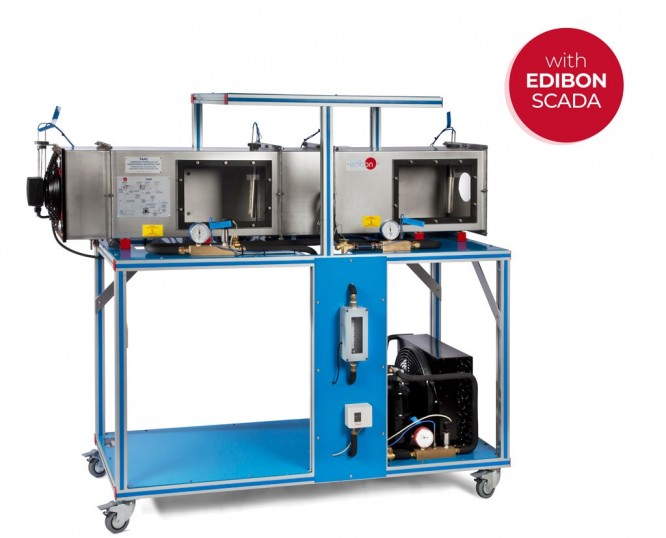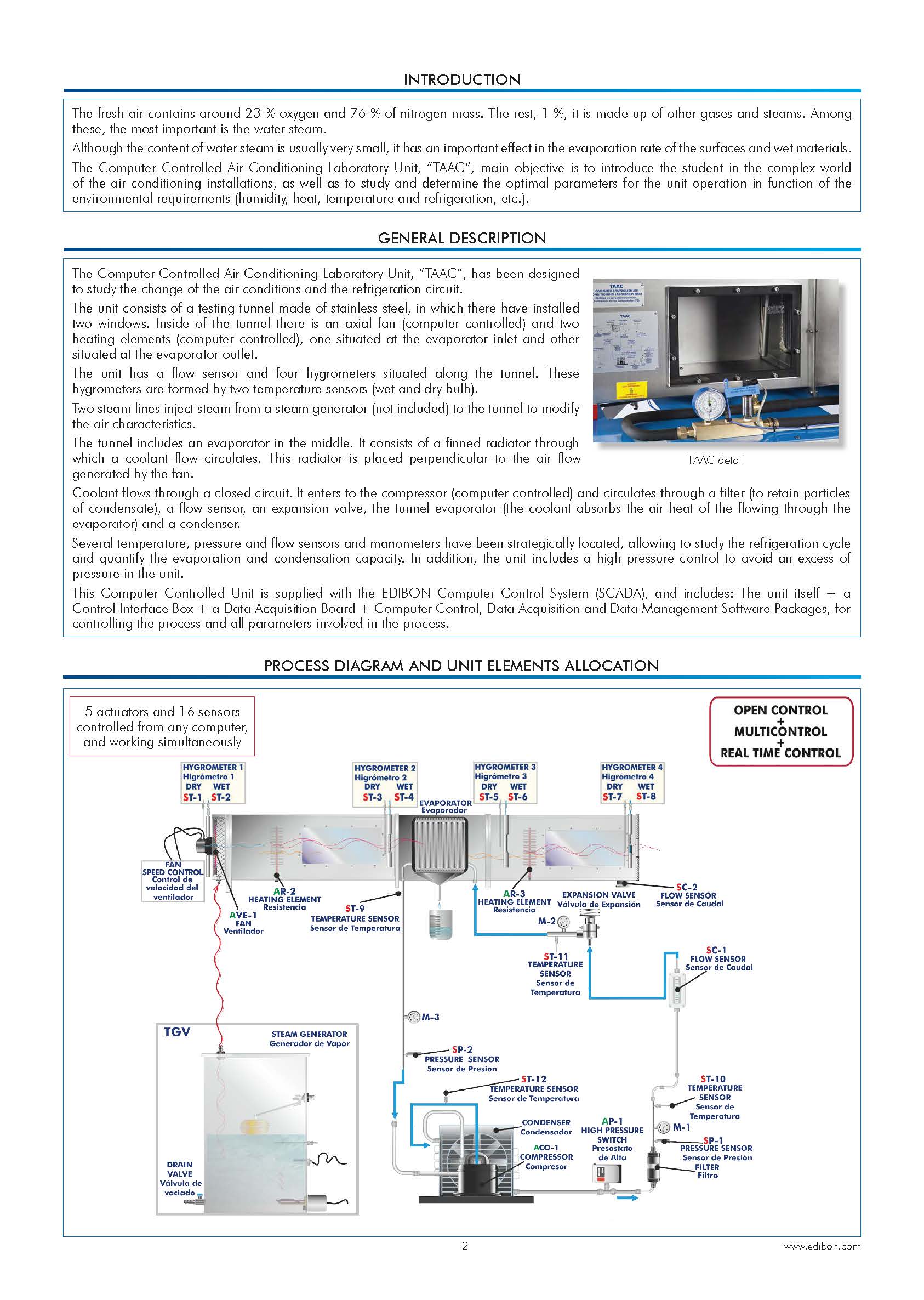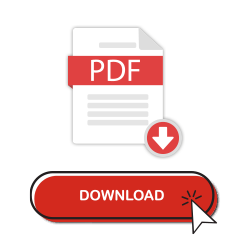
Computer Controlled Air Conditioning Laboratory Unit
INTRODUCTION
The fresh air contains around 23 % oxygen and 76 % of nitrogen mass. The rest, 1 %, it is made up of other gases and steams. Among these, the most important is the water steam. Although the content of water steam is usually very small, it has an important effect in the evaporation rate of the surfaces and wet materials.
The Computer Controlled Air Conditioning Laboratory Unit, “TAAC”, main objective is to introduce the student in the complex world of the air conditioning installations, as well as to study and determine the optimal parameters for the unit operation in function of the environmental requirements (humidity, heat, temperature and refrigeration, etc.).
EXERCISES AND PRACTICAL POSSIBILITIES
- Demonstration of the process and components used in heating, cooling, humidification, dehumidification.
- Obtaining the steam generator efficiency curve.
- Energy balance in the steam generator.
- Efficiency determination of preheating element.
- Preheating effect in an air conditioning installation.
- Dehumidification process study.
- Mass balance in the evaporator.
- Energy balance in the evaporator.
- Re-heat effect.
- Experimental determination of the air specific heating capacity.
Additional practical possibilities: - Sensors calibration.
- Psychrometric chart.
- Usage of psychrometric chart.
- Example of the air properties determination.
- Properties of the refrigerant R-513a.
- Enthalpy-Pressure diagram for the refrigerant R-513a.
Other possibilities to be done with this Unit: - Many students view results simultaneously.
To view all results in real time in the classroom by means of a projector or an electronic whiteboard. - Open Control, Multicontrol and Real Time Control.
This unit allows intrinsically and/or extrinsically to change the span, gains; proportional, integral, derivative parameters; etc, in real time. - The Computer Control System with SCADA and PID Control allow a real industrial simulation.
- This unit is totally safe as uses mechanical, electrical/electronic, and software safety devices.
- This unit can be used for doing applied research.
- This unit can be used for giving training courses to Industries even to other Technical Education Institutions.
- Control of the TAAC unit process through the control interface box without the computer.
- Visualization of all the sensors values used in the TAAC unit process.
– By using PLC-PI additional 19 more exercises can be done.
– Several other exercises can be done and designed by the user.



